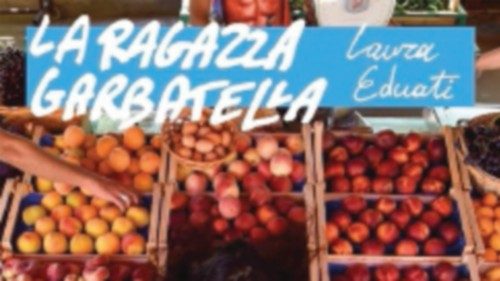
La ragazza Garbatella [The Garbatella Girl] by Laura Eduati (Accento editions) is a novel about grief and joy. About how pain remains embedded in life and how life can continue with joys, affections, friendships in work, passions and interests while still carrying it within. Mute, yet stubborn; to be reealed on page 256, that is, at the end of the book.
The protagonist of the novel, the author’s first (who is amongst the contributors of Women Church World), is a young woman - one can still call herself a girl - who lives in a Rome far removed from the iconography of ancient, imperial, the sleepy capital of so many novels and so many films.
Instead, we meet the building, squares, and streets of Rome’s Garbatella, a journey to a cultured district, and a neighborhood-village in which relationships still bear a resemblance to ancient solidarity. This is where the protagonist - who is from the north and does not particularly like Rome - moves at ease with curiosity and astonishment.
The girl has a smart yet modest job, which is quite precarious as a journalist at a small local station. She has friends, relationships, acquaintances. She grapples with grace and amiability in a life that is uncomfortable, involves uncertainties, ambiguities, misunderstandings, but also moments of joy. The novels that she reads and loves the friendships that reveal their depth; the love for a little dog found by chance, the conquest of finding a house that is not beautiful but that she feels is her own. In addition, there are the loves, the possible loves and the loves discovered.
This could be Laura Eduati’s bittersweet sentimental biography, but instead it is an intense novel. The reader senses from the very first lines that inside the Garbatella girl’s life there is something unspoken, but present in every gesture, every relationship, every choice. It is pain. A deep and ineradicable suffering that the girl carries inside that she struggles to even name, that gradually becomes apparent, which grips and clutches like a disease from which it seems impossible to free herself.
Nevertheless, is it then right to even do so? Is it right to expel the pain? Perhaps it is not right or impossible. However, and this is what Laura Eduati suggests under her breath- next to the tree of sorrow with its deep roots, other trees, other plants, other flowers can grow and bloom. Joy, even cheerfulness, can surround it, while mitigating its poisoning parts and cutting off those that prevent the birth of new and fruitful relationships, affections, and loves.
Just do not lock the pain it inside. Bring it out, show it to others, and share it. Talk about it, talk about it, talk about it, as the girl from Garbatella does - finally - in the last pages of the book.
by Ritanna Armeni













 Purchase the Encyclical here Fratelli Tutti
Purchase the Encyclical here Fratelli Tutti
